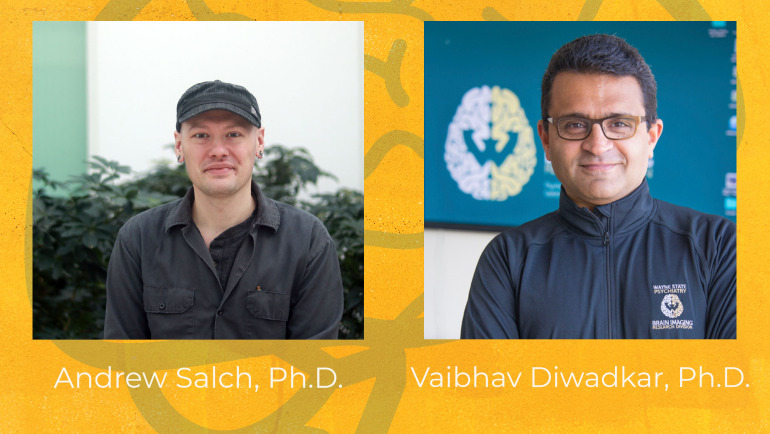
DETROIT – Research led by a Wayne State University Department of Mathematics professor is aiding researchers in Wayne State’s Department of Psychiatry and Behavioral Neurosciences in analyzing fMRI data. fMRI is the preeminent class of signals collected from the brain in vivo and is irreplaceable in the study of brain dysfunction in many medical fields, including psychiatry, neurology and pediatrics.
Andrew Salch, Ph.D., associate professor of mathematics in Wayne State’s College of Liberal Arts and Sciences, is leading the multidisciplinary team that is investigating how concepts of topological data analysis, a subfield of mathematics, can be applied to recovering “hidden” structure in fMRI data.
“We hypothesized that aspects of the fMRI signal are not easily discoverable using many of the standard tools used for fMRI data analysis, which strategically reduce the number of dimensions in the data to be considered. Consequently, these aspects might be uncovered using concepts from the mathematical field of topological data analysis, also called TDA, which is intended for use on high-dimensional data sets,” said Salch. “The high dimensionality that characterizes fMRI data includes the three dimensions of space — that is, where in the brain the signal is being acquired — time — or how the signal varies as brain states change in time — and signal intensity — or how the strength of the fMRI signal changes in response to the task. When related to task-induced changes, the results reflect biologically meaningful aspects of brain function and dysfunction. This is a unique collaborative work focused on the complexities of both TDA and fMRI respectively, show how TDA can be applied to real fMRI data collected, and provide open access computational software we have developed for implementing the analyses.”
The research article, “From mathematics to medicine: A practical primer on topological data analysis and the development of related analytic tools for the functional discovery of latent structure in fMRI data,” appears in the Aug. 12 issue of PLOS ONE.
In it, the team used TDA to discover data structures in the anterior cingulate cortex, a critical control region in the brain. These structures — called non-contractible loops in TDA — appeared in specific conditions of the experiment, and were not identified using conventional techniques for fMRI analyses.
“We expect this work to become a citation classic,” said Vaibhav Diwadkar, Ph.D., professor of psychiatry and behavioral neurosciences and research collaborator. "Instead of merely applying TDA to fMRI, we provide a lucid argument for why medical researchers who use fMRI should consider using TDA, and why topologists should turn their attention to the study of complex fMRI data. Moreover, this important work provides readers with empirical demonstrations of such applications, and we provide potential users with the tools we used so they can in turn apply it to their own data.”
“Our ongoing research utilizing TDA with fMRI will provide a unique and complementary method for assessing brain function, and will give medical researchers greater flexibility in tackling complex properties in their data,” said Salch. “In particular, our work will help fMRI researchers become aware of the significant power of TDA that is designed to address complexity in data, and will enhance the value of using fMRI in neuroscience and medicine.”
In addition to Salch and Diwadkar, co-authors on the paper include Adam Regalski, Wayne State mathematics graduate student; Hassan Abdallah, Wayne State mathematics department alumni and current graduate student at the University of Michigan; and Michael Catanzaro, assistant professor of mathematics at Iowa State University and Wayne State mathematics department alumni.
To view the full article, visit https://pubmed.ncbi.nlm.nih.gov/34383838/.
This work is supported by the National Institutes of Health (MH111177 and MH059299), the Jack Dorsey Endowment, the Cohen Neuroscience Endowment, and the Lycaki-Young Funds from the State of Michigan.
About Wayne State University
Wayne State University is one of the nation’s pre-eminent public research universities in an urban setting. Through its multidisciplinary approach to research and education, and its ongoing collaboration with government, industry and other institutions, the university seeks to enhance economic growth and improve the quality of life in the city of Detroit, state of Michigan and throughout the world. For more information about research at Wayne State University, visit research.wayne.edu.
